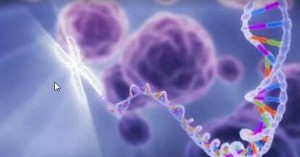-
 Florida
FloridaMapping Genes: Mayo Clinic Finds New Risk Factors for Neurodegenerative Diseases
JACKSONVILLE, Fla. — June 6, 2012. Using a new and powerful approach to understand the origins of neurodegenerative disorders such as Alzheimer's disease, researchers at Mayo Clinic in Florida are building the case that these diseases are primarily caused by genes that are too active or not active enough, rather than by harmful gene mutations.

VIDEO ALERT: Video resources of Nilufer Ertekin-Taner, M.D., Ph.D., discussing the study are available here.
In the June 7 online issue of PLoS Genetics, they report that several hundred genes within almost 800 brain samples of patients with Alzheimer's disease or other disorders had altered expression levels that did not result from neurodegeneration. Many of those variants were likely the cause.
"We now understand that disease likely develops from gene variants that have modest effects on gene expression, and which are also found in healthy people. But some of the variants — elevating expression of some genes, reducing levels of others — combine to produce a perfect storm that leads to dysfunction," says lead investigator Nilufer Ertekin-Taner, M.D., Ph.D., a Mayo Clinic neurologist and neuroscientist.
"If we can identify the genes linked to a disease that are too active or too dormant, we might be able to define new drug targets and therapies," she says. "That could be the case for both neurodegenerative disease as well as disease in general."
Dr. Ertekin-Taner says no other lab has performed the extent of brain gene expression study conducted at Mayo Clinic's Florida campus. "The novelty, and the usefulness, of our study is the sheer number of brain samples that we looked at and the way in which we analyzed them. These results demonstrate the significant contribution of genetic factors that alter brain gene expression and increase risk of disease," she says.
This form of data analysis measures gene expression levels by quantifying the amount of RNA produced in tissue and scans the genome of patients to identify genetic variants that associate with these levels.
Mayo researchers measured the level of 24,526 transcripts (messenger RNA) for 18,401 genes using cerebellar autopsy tissue from 197 Alzheimer's disease patients and from 177 patients with other forms of neurodegeneration. The researchers then validated the results by examining the temporal cortex from 202 Alzheimer's disease patients and from 197 with other pathologies. The difference between these samples is that while the temporal cortex is affected by Alzheimer's disease, the cerebellum is relatively spared.
From these analyses, the researchers identified more than 2,000 markers of altered expression in both groups of patients that were common between the cerebellum and temporal cortex. Some of these markers also influenced risk of human diseases, suggesting their contribution to development of neurodegenerative and other diseases regardless of their location in the brain.
They identified novel expression "hits" for genetic risk markers of diseases that included progressive supranuclear palsy, Parkinson's disease, and Paget's disease, and confirmed other known associations for lupus, ulcerative colitis, and type 1 diabetes.
"Altered expression of brain genes can be linked to a number of diseases that affect the entire body," Dr. Ertekin-Taner says.
They then compared their eGWAS to GWAS data on Alzheimer's disease, conducted by the federally funded Alzheimer's Disease Genetics Consortium, to test whether some of the risk genes already identified promote disease through altered expression.
"We found that a number of genes already linked to Alzheimer's disease do, in fact, have altered gene expression, but we also discovered that many of the variants in what we call the gray zone of the GWAS — genes whose contribution to Alzheimer's disease was uncertain — were also influencing brain expression levels," Dr. Ertekin-Taner says. "That offers us new candidate risk genes to explore.
"This is a powerful approach to understanding disease," she says. "It can find new genes that contribute to risk, as well as new genetic pathways, and can also help us understand the function for a large number of genes and other molecular regulators in the genome that are implicated in very important diseases."
The study was funded in part by National Institutes of Health grants and the Mayo Alzheimer's Disease Research Center. The complete results are being made available to the scientific community.
Study co-authors include Fanggeng Zou, Ph.D., High Seng Chai, Curtis Younkin, Mariet Allen, Steven Younkin, M.D., Ph.D., and Minerva Carrasquillo, Ph.D., who also provided genotypes for the Mayo Alzheimer's disease GWAS; Dennis Dickson, M.D., Julia Crook, Ph.D., Shane Pankratz, Ph.D., Neill Graff-Radford, M.D., and Ronald Petersen, M.D., Ph.D.
###
About Mayo Clinic:
Recognizing 150 years of serving humanity in 2014, Mayo Clinic is a nonprofit worldwide leader in medical care, research and education for people from all walks of life. For more information, visit 150years.mayoclinic.org, www.mayoclinic.org and newsnetwork.mayoclinic.org.
Media Contact: Kevin Punsky, 904-953-2299 (days), punsky.kevin@mayo.edu







